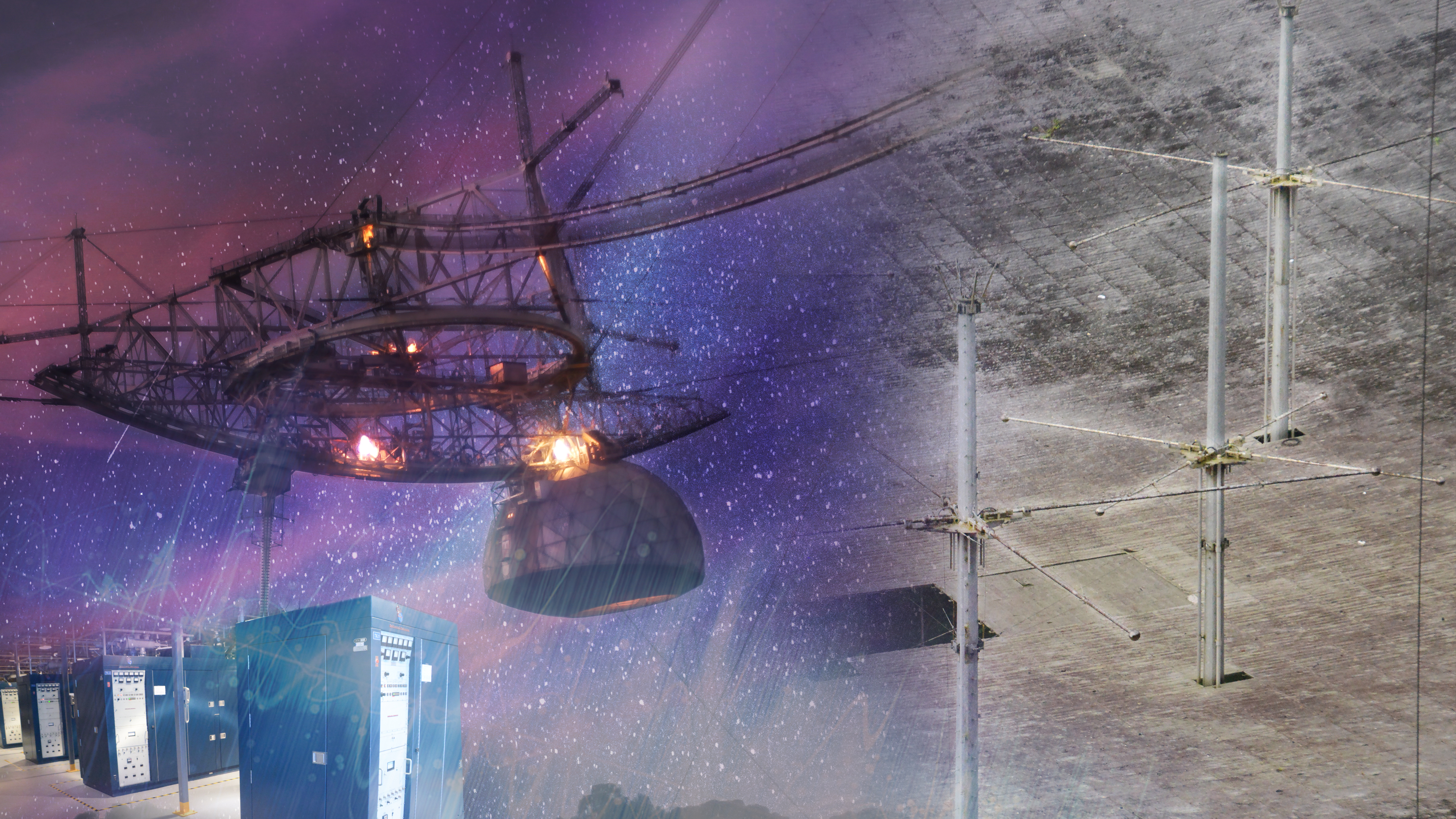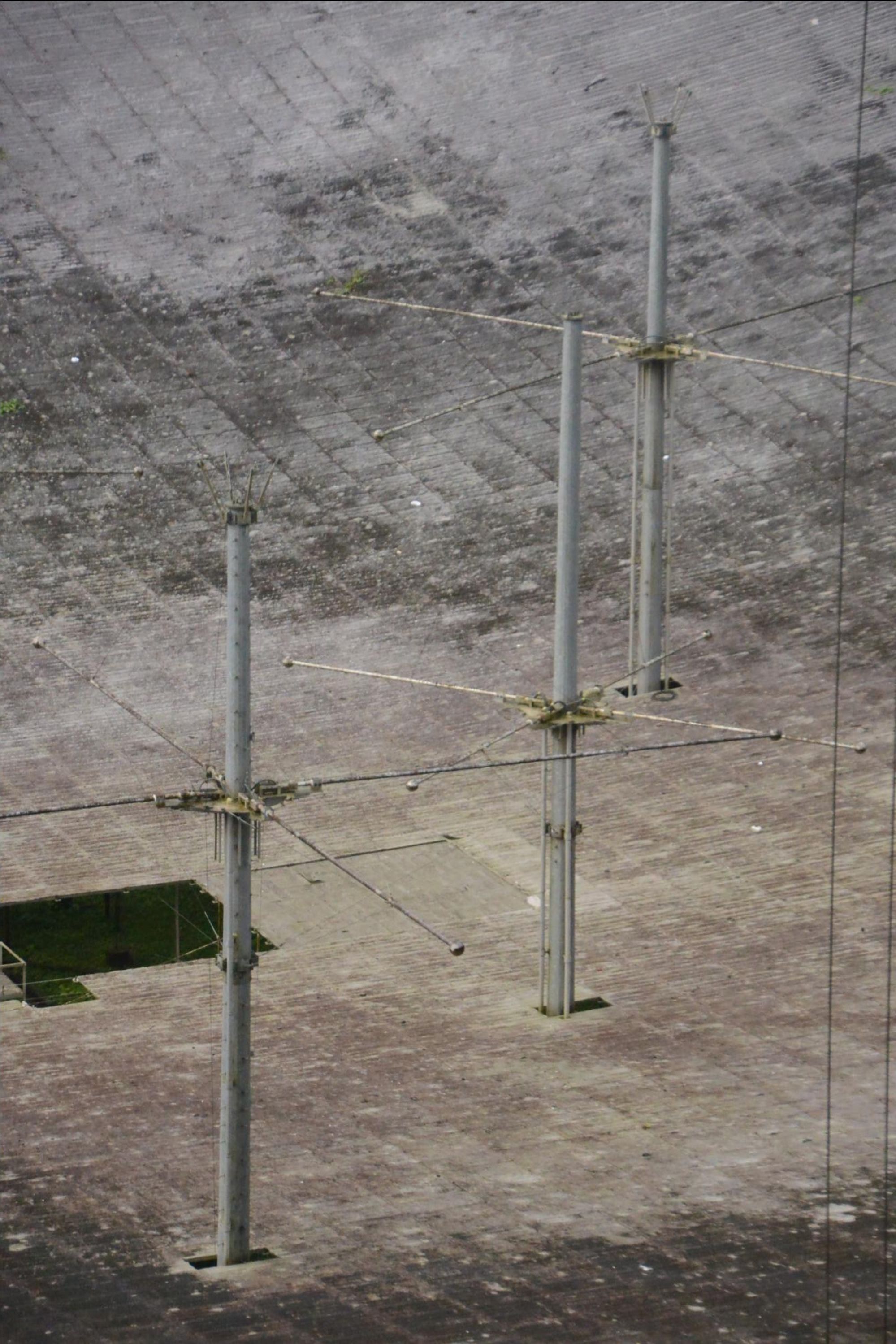- Leter from Dr. Julie Brisset (Principal Investigator of the Arecibo Observatory)13 Sep, 2022
- Arecibo Deputy Principal Scientist to Explore the Cosmos with the JWST02 Sep, 2022
- Letter from the Director22 Aug, 2022
- Piercing through the Clouds of Venus with Arecibo Radar17 Aug, 2022
- Summer greetings from the Facilities and Operations Team!17 Aug, 2022
- Arecibo Observatory at the Small Bodies Assessment Group12 Aug, 2022
- Meet the 2022 Arecibo Observatory REU students!11 Aug, 2022
- Meet Luis R. Rivera Gabriel, Research Intern in the Planetary Radar Group09 Aug, 2022
- Updates from the 2022 CEDAR Workshop in Austin, TX09 Aug, 2022
- Insights into the AAS Conference from AO Analyst Anna McGilvray08 Aug, 2022
- American Astronomical Society’s 240th Meeting: Plenary Lecture Building the Future of Radio Science with the Arecibo Observatory by Dr. Héctor Arce. 28 Jul, 2022
- TRENDS 202227 Jul, 2022
- Advancing IDEA in Planetary Science 27 Jul, 2022
- The Arecibo Observatory: An Engine for Science and Scientists in Puerto Rico and Beyond27 Jul, 2022
- Cryogenic Frontend work for the 12m telescope entering phase II21 Jul, 2022
- Remote Optical Facility Updates20 Jul, 2022
Modifying the Earth’s Ionosphere from Arecibo
Byadmin29 June 2020 Atmospheric

| Space & Atmospheric |
A unique, high-altitude plasma cavity formed over Arecibo during an ionospheric heating campaign conducted at the observatory in June of 2019. Simultaneously, the Arecibo Incoherent Scatter Radar (ISR) collected measurements of the narrow cavity, revealing an exceptionally deep depletion of the electron density and a strong enhancement of the electron and ion temperatures.
he AO experiment and its scientific implications were detailed in a recent publication of the Journal of Geophysical Research - Space Physics. The team of researchers used the Arecibo Observatory’s 430 MHz radar to put energy into the Earth’s ionosphere, and then observed how the ionospheric plasma was affected. In response to the heat, the plasma density itself was reduced, forming the observed cavity.
Dr. Edlyn Levine, Lead Physicist at the MITRE Corporation and the principal investigator of the study, described the motivation behind this work. “Modification experiments that leverage resonant coupling of high power radio frequency waves to the ionospheric plasma reveals complexities of the ionosphere that are important to understand for both fundamental and applied planetary science.”
"This showed that the level of modification that we can do to the ionosphere using Arecibo is more profound than generally accepted for a heater of our power level..." - Dr. Michael Sulzer, Senior Observatory Scientist at Arecibo Observatory
 In this experiment, the team was surprised by the strength of the plasma cavity that formed. “This showed that the level of modification that we can do to the ionosphere using Arecibo is more profound than generally accepted for a heater of our power level,” remarked Dr. Michael Sulzer, AO scientist and co-author on the publication. “Every ionospheric parameter we were studying showed modification of some kind!”
In addition to having the ability to modify the ionosphere, Dr. Levine asserted that “Arecibo is uniquely positioned at mid-latitude and has unique diagnostic capabilities, the most exceptional being the ISR.”
In this experiment, the team was surprised by the strength of the plasma cavity that formed. “This showed that the level of modification that we can do to the ionosphere using Arecibo is more profound than generally accepted for a heater of our power level,” remarked Dr. Michael Sulzer, AO scientist and co-author on the publication. “Every ionospheric parameter we were studying showed modification of some kind!”
In addition to having the ability to modify the ionosphere, Dr. Levine asserted that “Arecibo is uniquely positioned at mid-latitude and has unique diagnostic capabilities, the most exceptional being the ISR.”
“Arecibo is uniquely positioned at mid-latitude and has unique diagnostic capabilities, the most exceptional being the ISR.” - Dr. Edlyn Levine Lead Physicist at the MITRE Corporation
In fact, the team applied a new ISR technique during their observations. They alternated the radar system on and off every 10 seconds, and then used the radar backscatter to understand the background conditions of the ionosphere better. This provided a clearer view of the plasma cavity.
Ionospheric studies have always been of interest to Dr. Sulzer. “There is still so much we do not know,” he related. “Experimental plasma physics is a difficult science. In a laboratory, your experiment is limited because you have to confine the plasma. However, using the entire ionosphere as a lab is extremely interesting because the plasma is unconstrained in size.”
Dr. Levine affirmed the importance of using facilities like Arecibo to obtain a more detailed understanding of how the ionosphere responds to changes like those created during the heating experiments. “We are constantly being surprised by new results from further probing of the ionosphere.”
The physical facility of Arecibo is incredible in scale and capability, but the most remarkable aspect of my visit was the incredibly friendly and knowledgeable scientific and engineering staff,” Dr. Levine remarked about her first visit to the Arecibo Observatory. “My hope is that this is the first of many high frequency heating campaigns that we can run.”
|
Article written by Dr. Tracy Becker - AO Collaborator / SwRI Research Scientist
Contact: tbecker@swri.edu |
Head of the Space & Atmospheric Dept. |
Keywords: arecibo, observatory, Levine, Sulzer, MITRE, ionospheric, heating, campaign, Experimental, plasma, physics, isr, incoherent, scatter radar, 430, MHZ,

